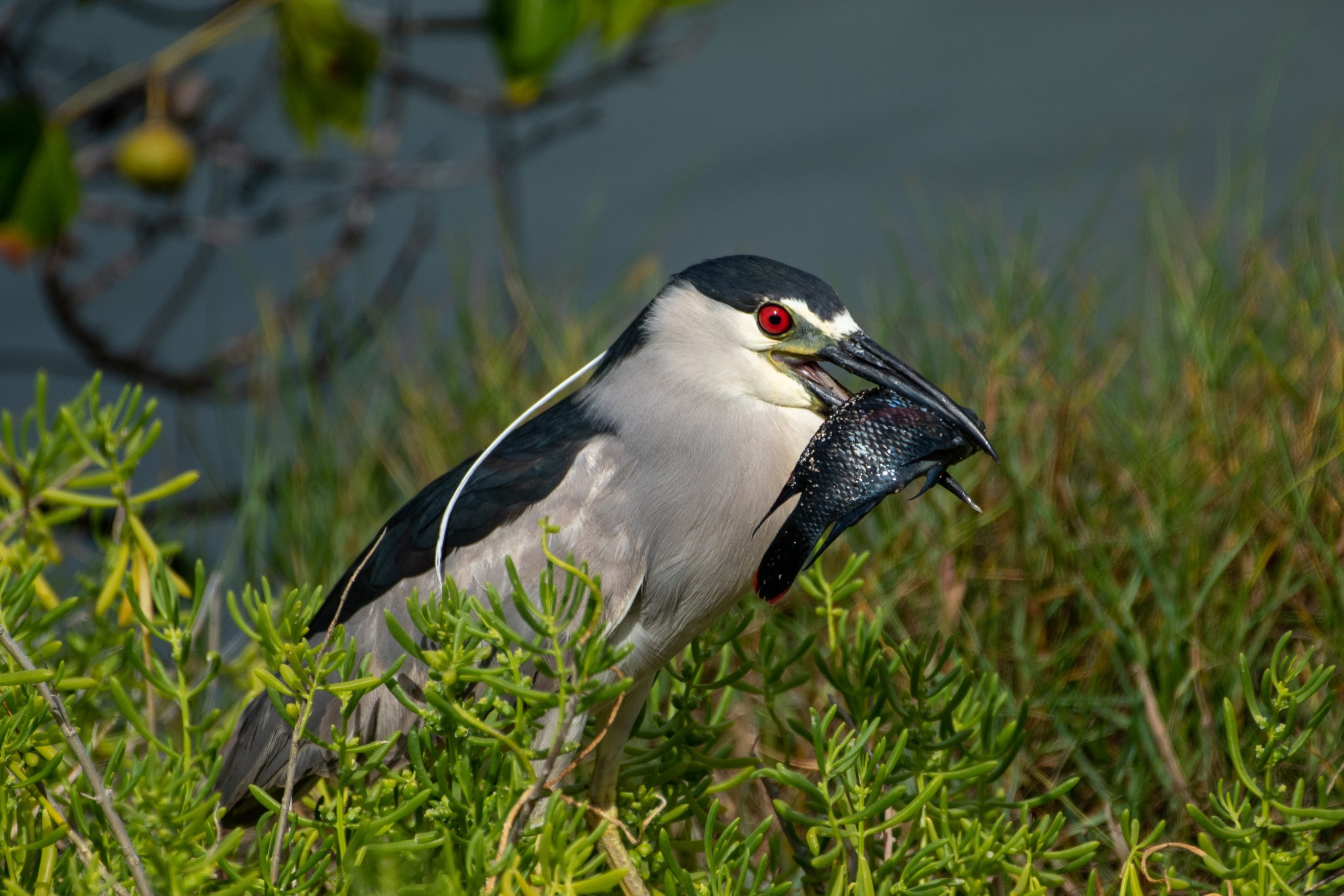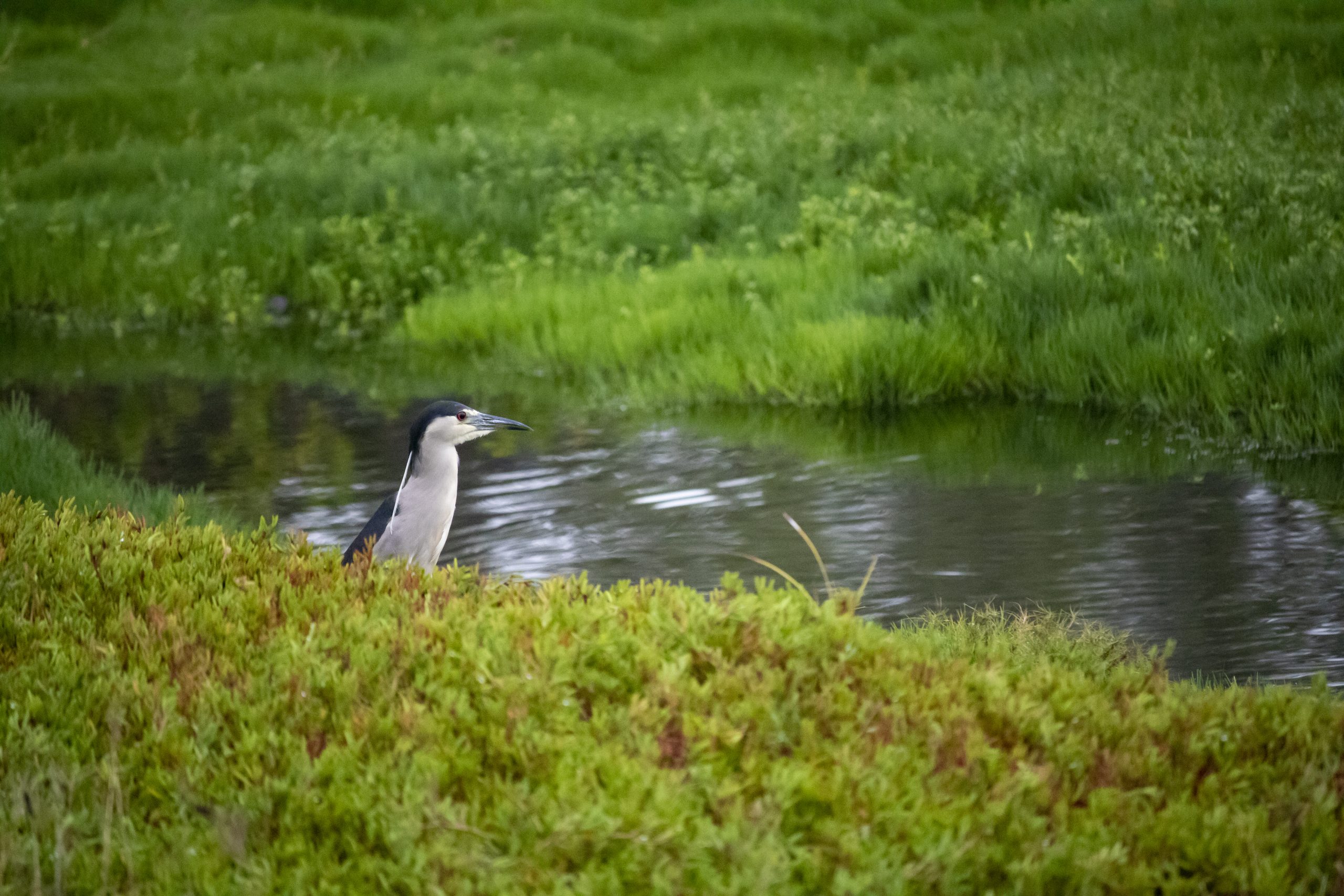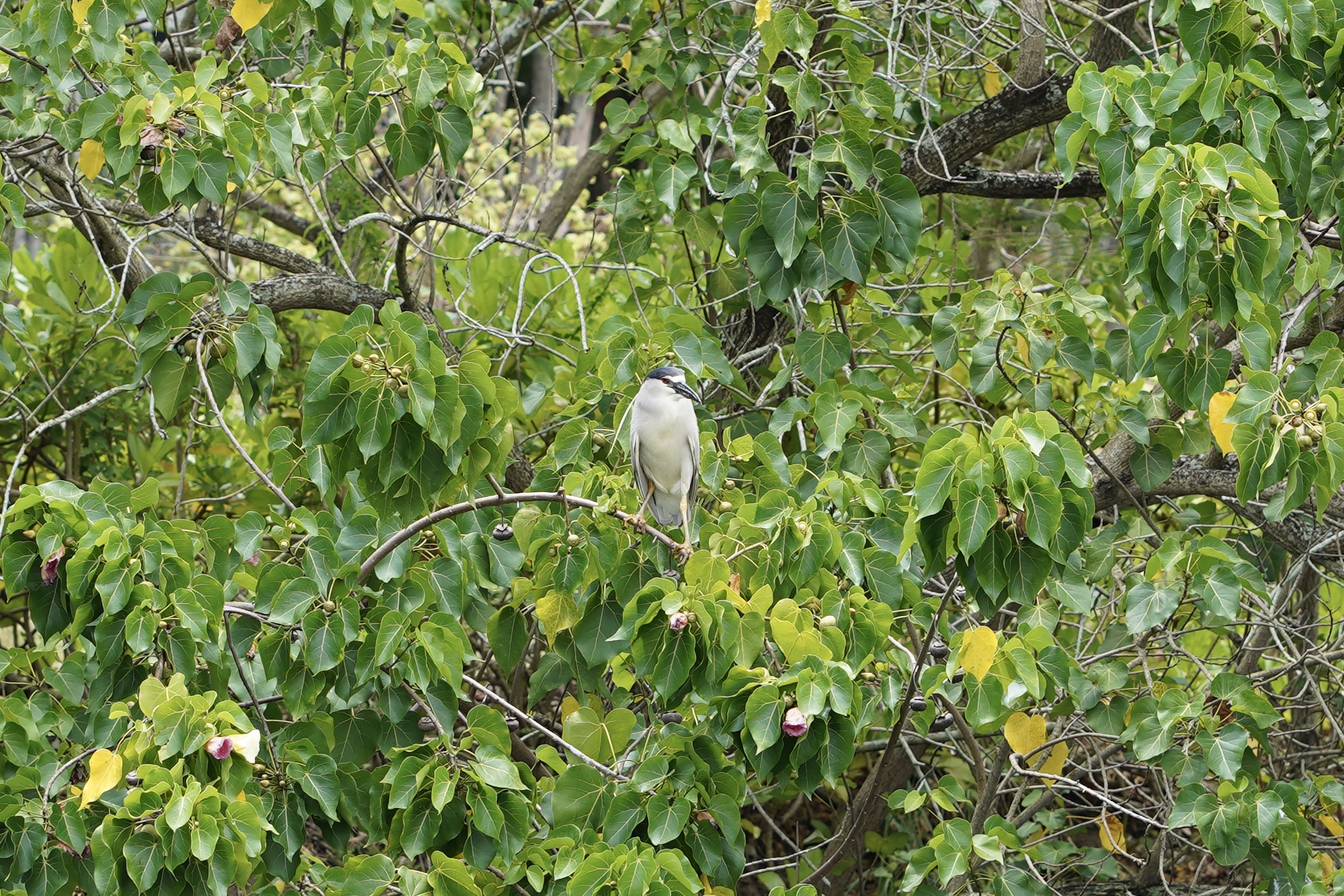ʻAukuʻu
Names
- ʻŌlelo Hawaiʻi: ‘Auku‘u
- Common: Black-crowned Night Heron
- Scientific: Nycticorax nycticorax hoactli
Song
Conservation Status
- IUCN Red List Ranking— Least Concern
Species Information
The ‘auku‘u or black-crowned night heron (Family: Ardeidae) is a species that breeds on every continent except for Australia and Antarctica. Four subspecies are recognized and N. n. hoactli occurs in Hawai‘i, as well as across North America and most of South America. Adult males and females have a black crown and upper back, with a white throat, cheeks, and a narrow band above the bill that extends over the eyes, gray wings, and whitish underparts; males are larger than females. Juveniles are overall brown with light spots. The species’ stout bill is black; legs and feet are yellow, and the eyes are red. ‘Auku‘u (black-crowned night heron) are sociable and unlike continental birds, those in Hawai‘i are diurnal. The species uses a variety of shallow wetlands for foraging and employs various techniques to capture a diversity of prey including insects, fish, frogs, mice, and the young of other native waterbirds. Information on breeding in Hawai‘i is limited, but the species is a colonial nester, and in North America breeding occurs from December to August. Eggs are laid in a bulky stick nest usually placed low in vegetation.
Distribution
‘Auku‘u (black-crowned night heron) is widely distributed throughout the MHI.
Habitat
‘Auku‘u (black-crowned night heron) occur in a wide-range of aquatic habitats including mountain streams, lowland ponds and estuaries (wetlands and open water), aquaculture farms, and suburban/urban waterways (e.g., golf course ponds, concrete channels).
Threats
Similar to the rest of Hawaiian native waterbirds, ‘auku‘u (black-crowned night heron) are threatened by:
- Habitat loss. In the last 110 years, approximately 31 percent of coastal plain wetlands have been lost. A shift in wetland agriculture to other agriculture crops also has reduced the amount of wetland habitats.
- Introduced predators. Dogs (Canis domisticus), rats (Rattus spp.), feral cats (Felis silvestris), the small Indian mongoose (Herpestes auropunctatus), cattle egrets (Bulbulcus ibis), and barn owls (Tyto alba) all potentially prey on adult or young ‘auku’u (black crowned night heron).
- Non-native invasive plants. Several species of invasive plants, including pickleweed (Batis maritima), water hyacinth (Eichornia crassipes), and mangrove (Rhizophora mangle) reduce open water, mudflats, or shallows.
- Avian diseases. The most important disease affecting Hawaiian waterbirds is botulism (Clostridium botulinum).
- Environmental contaminants. Fuel and oil spills are the most important contaminant threat to Hawaiian waterbirds.
Learn more
Plans & Projects
- State of Hawaiʻi Biannual Waterbird Surveys
- Kawainui Marsh Wetland Restoration and Habitat Enhancement Plan
- Kawainui-Hāumākua Marsh Master Plan Final EIS
Photos
Additional Resources
For more information and references visit the DLNR State Wildlife Action Plan factsheets. DOFAWʻs species pages and State Wildlife Action Plan fact sheets are provided for general information and are not meant to be a citable, original source of data. If you are a student, researcher, or writer looking for a citable source, please explore the references below or find other original data sources, rather than citing these webpages. The references below were provided by the authors of the State Wildlife Action Plan fact sheets at the time of drafting:
- Berger AJ. 1981. Hawaiian birdlife. Honolulu: University of Hawai‘i Press. 260 pp.
- Davis WE. 1993. Black-crowned night-heron (Nycticorax nycticorax). In The Birds of North America, No. 74 (Poole A, Gill F, editors.). Philadelphia (PA): The Academy of Natural Sciences; and Washington, D.C.: The American Ornithologists’ Union.
- Pratt DH, Bruner PL, Berrett DG. 1987. Field guide to the birds of Hawai‘i and the tropical Pacific. Princeton, (NJ): Princeton University Press.


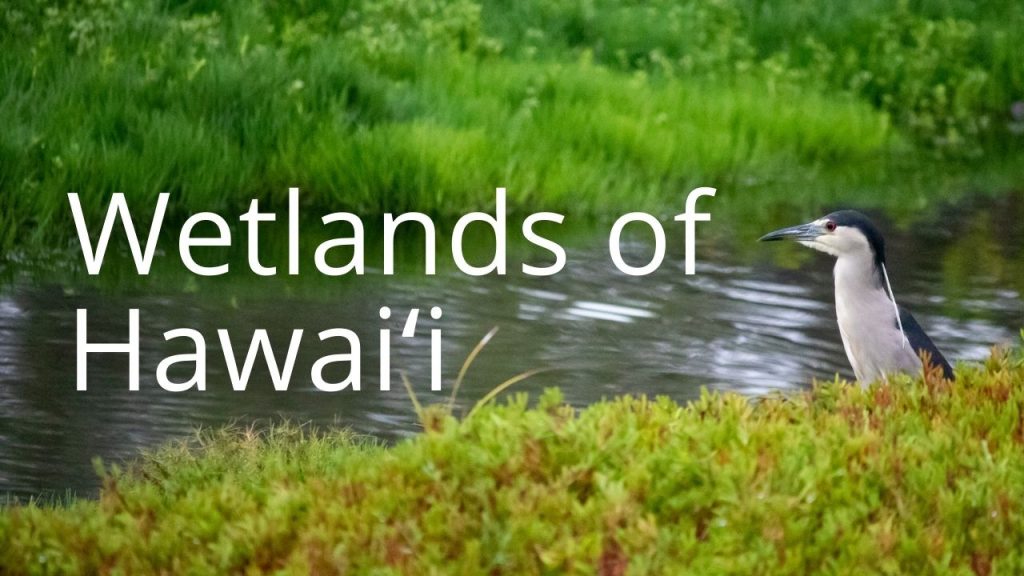 Wetlands of Hawaiʻi Story Map
Wetlands of Hawaiʻi Story Map Kawainui Marsh Story Map
Kawainui Marsh Story Map Kawainui Marsh Virtual Tour
Kawainui Marsh Virtual Tour
 Pouhala Marsh Virtual Tour
Pouhala Marsh Virtual Tour Hāmākua Marsh Story Map
Hāmākua Marsh Story Map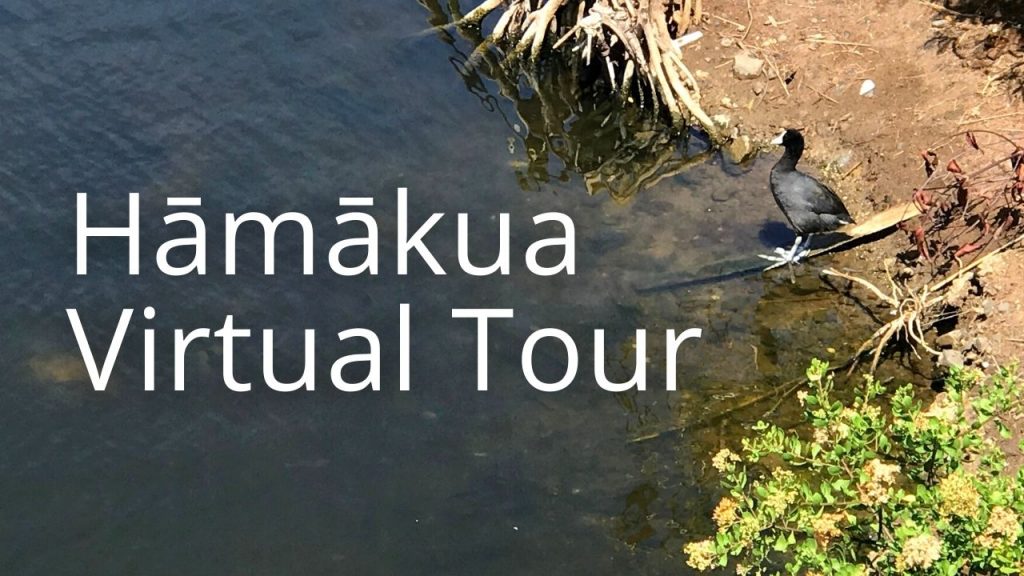 Hāmākua Marsh Virtual Tour
Hāmākua Marsh Virtual Tour